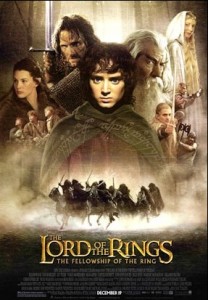Best cgi movies
Lucy Edwards is one of our senior 3D visualisers and finds inspiration from the world around her.
We thought we’d sit down and ask her to share her top five, best CGI movies that uses animation in jaw dropping ways.
Here are Lucy’s top 5:
Avatar became the ground breaking movie that was filmed in photo-realistic, “stereoscopic 3D.” This meant that director James Cameron co-developed (alongside Vince Pace) a new generation of stereoscopic cameras using a Fusion Camera System.
60% of the movie is CGI, with the majority of the CG character animation filmed with revolutionary new motion- capture techniques using live actors. The remaining 40% of the film was live-action imagery. The whole experience means that the characters are believable and more importantly the Na’Vi (the people who inhabit the moon of Pandora) look as realistic as the live actors.
When you look at the finer detail for the movie, the majority of the trees have been modelled by hand. The plants had to have the resolution to hold up at any distance and all plants had to hold up in the foreground.
The simplest plant had around 1,000 to 5,000 polygons, which is relatively low resolution. The average plant was closer to 20 to 100,000 polygons. Some of the high resolution plants, one called “fernRekA” that looked like a fern whose leaves hadn’t yet unfurled, had 1.2 millions polygons.
The amount of detail is astonishing. Each leaf and every insect was modelled. James Cameron boosted the bug count to 60,000, so he could see 60 at a time on screen.
Lets get all cosy with a fantastic Disney film. It is inspired by Hans Christian Andersen’s The Snow Queen and became the first Disney film to gross more than $1 billion. This now ranks as the highest grossing animation film in history.
This is the best fake snow that I have ever seen. It is the small detail that makes everything look beautiful. The CGI team created a simulator to depict real snow called Matterhorn. This highlighted realistic snow in a virtual environment and show the behaviour between different types of snow. In addition to consulting scientific experts about the precise physical properties of snowflakes, the film’s animators and special effects artistes were sent to wade through snowdrifts in Cheyenne, Wyoming.
This film represents a piece of cinematic history. On November 22 1995, Pixar and Disney released Toy Story. This was the first feature-length film made entirely by computer-generated animation. The film went on to earn of $361 worldwide (so Frozen, see above, clearly takes the crown).
The Toy Story team consisted of 27 animators who started with animated storyboards to develop the characters. They created models out of clay before creating over 400 computer models before the computer animation could proceed. Once the computer models were made, the animators coded each motion control. Woody alone had 723 motion models, with 212 in his face and 58 just for his mouth.
The intense real action of The Matrix took directors The Wachowski brothers and their VFX (visual effects) supervisor John Gaeta to the Far East. The famous Manga cyberpunk Akira director Katsuhiro Otomo’s view-morphing techniques were a huge influence on this movie.
Multiple cameras, CG and wire work-driven motion played with audiences’ perceptions and created the now famous rotating, slow-motion bullet-time. Assisting with the wirework was veteran Hong Kong action cinema choreographer Yeun Woo-Ping. He enhanced the Oscar-winning effects where we see Neo’s suspended, airborne kung fu fights.

Another groundbreaking film that was notable for the way the virtual and the actual world interact. Thanks to Andy Serkis’ remarkable performance and Weta’s digital effects team, Gollum became the very first motion-captured CG character to interact directly with real life actors. Traditional animation techniques, including rotoscoping and keyframing, were used to replace Serkis’ face with Gollum’s after Jackson decided against making Gollum an entirely CGI based character. It was the right move.
The amount of CG used in this film is immense. MASSIVE software (Multiple Agent Simulation System in Virtual Environment) generated artificial intelligent CG Orcs by the thousands. The epic sequences during the movie have a real sense of realism.
Be interesting to know what you think? Which films stand out for you? What are your best CGI movies? Feel free to share with us and we’ll build a new collection. Let Lucy know what you think lte@architectureinmotion.com